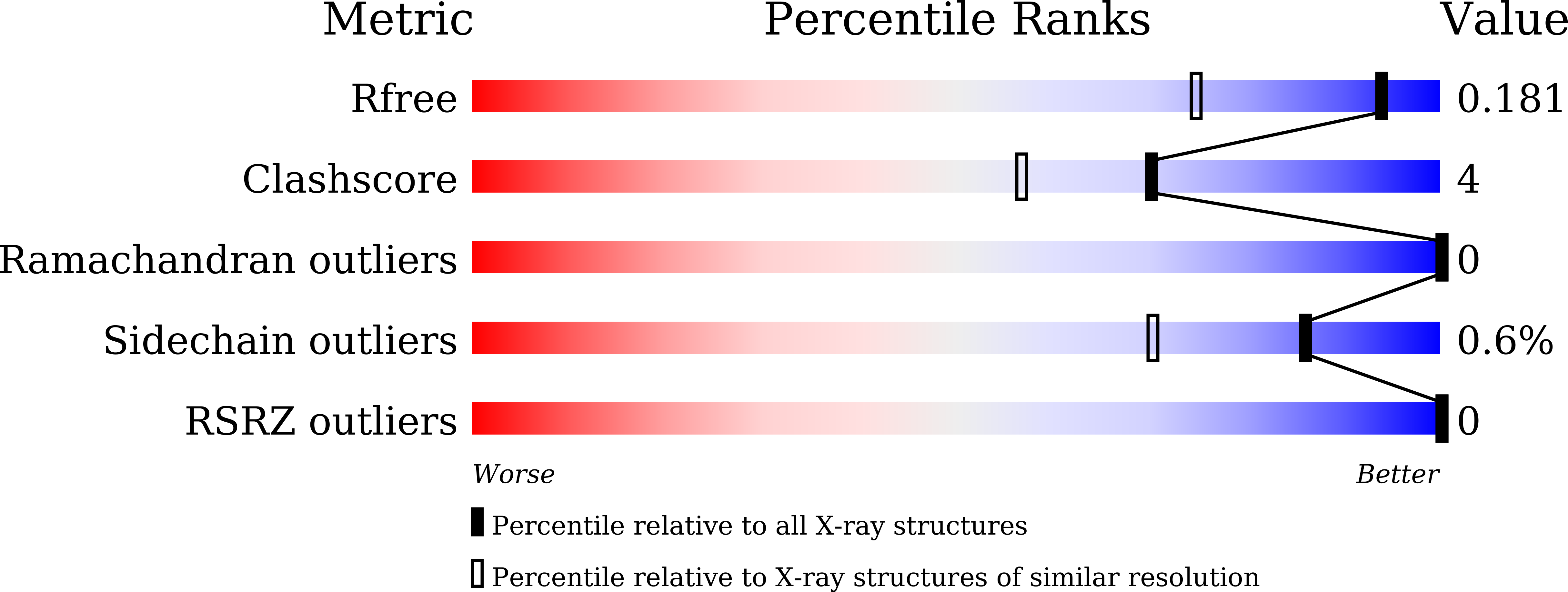Crystal structure of the delta-class glutathione transferase in Musca domestica
Sue, M., Yajima, S.(2018) Biochem Biophys Res Commun 502: 345-350
- PubMed: 29803675
- DOI: https://doi.org/10.1016/j.bbrc.2018.05.161
- Primary Citation of Related Structures:
5ZWP - PubMed Abstract:
Among the various glutathione transferase (GST) isozymes in insects, the delta- and epsilon-class GSTs fulfill critical functions during the detoxification of insecticides. We crystalized MdGSTD1, the major delta-class GST isozyme in the housefly (Musca domestica), in complex with glutathione (GSH) and solved its structure at a resolution of 1.4 Å. The overall folding of MdGSTD1 resembled other known delta-class GSTs. Its substrate binding pocket was exposed to solvent and considerably more open than in the epsilon-class GST from M. domestica (MdGSTE2). However, their C-terminal structures differed the most because of the different lengths of the C-terminal regions. Although this region does not seem to directly interact with substrates, its deletion reduced the enzymatic activity by more than 70%, indicating a function in maintaining the proper conformation of the binding pocket. Binding of GSH to the GSH-binding region of MdGSTD1 results in a rigid conformation of this region. Although MdGSTD1 has a higher affinity for GSH than the epsilon class enzymes, the thiol group of the GSH molecule was not close enough to serine residue 9 to form a hydrogen-bond with this residue, which is predicted to act as the catalytic center for thiol group deprotonation in GSH.
Organizational Affiliation:
Department of Agricultural Chemistry, Tokyo University of Agriculture, Sakuragaoka 1-1-1, Setagaya, Tokyo, 156-8502, Japan. Electronic address: sue@nodai.ac.jp.




















